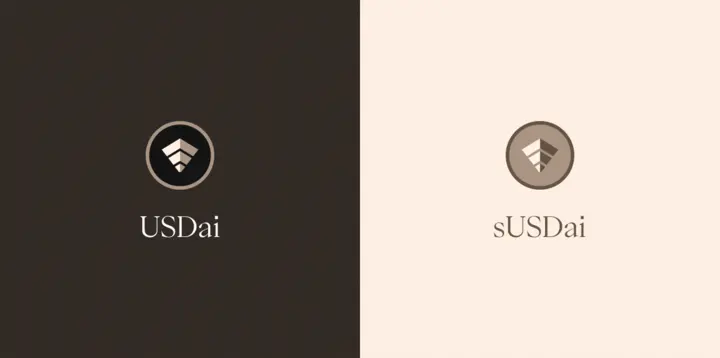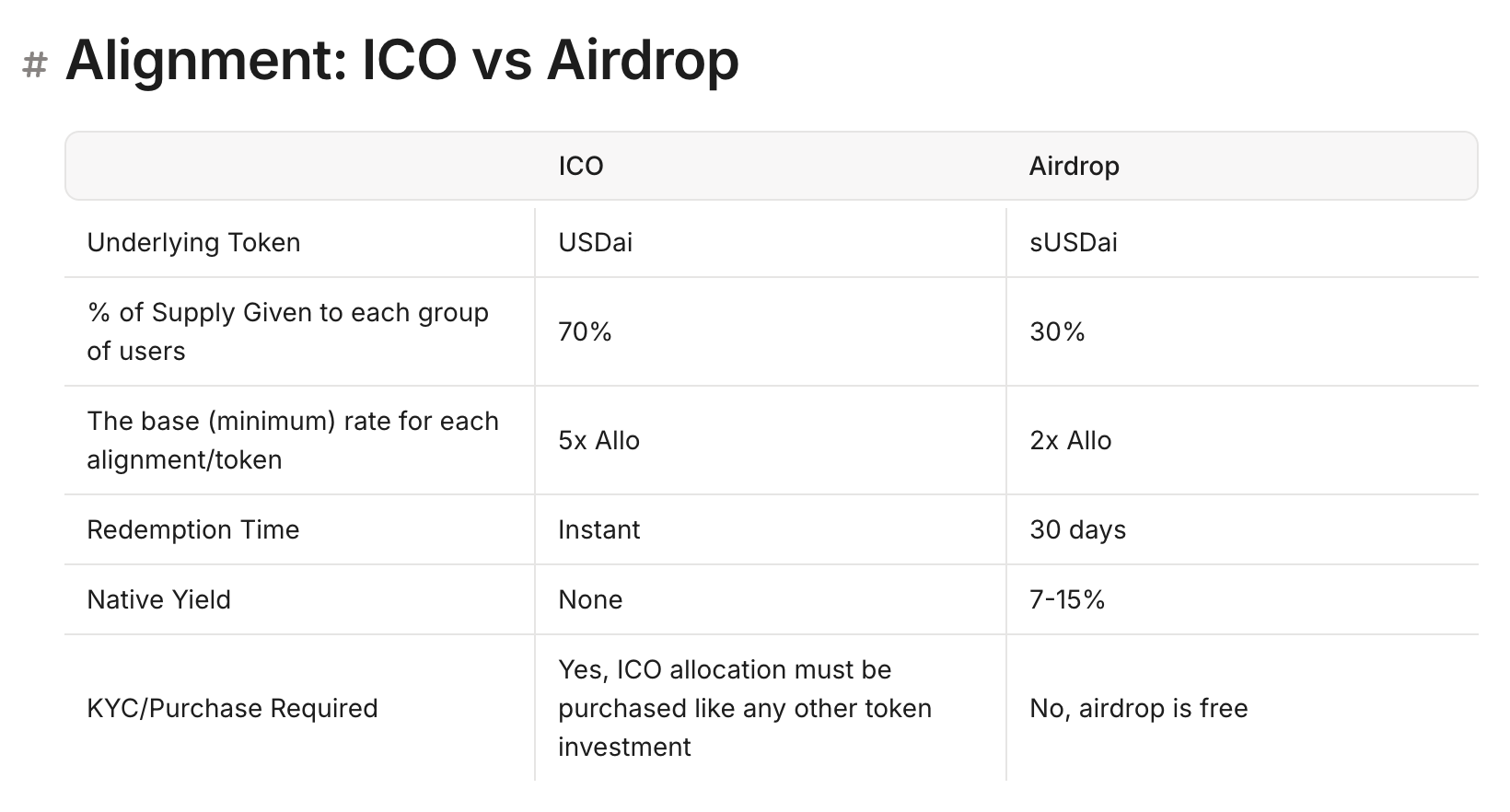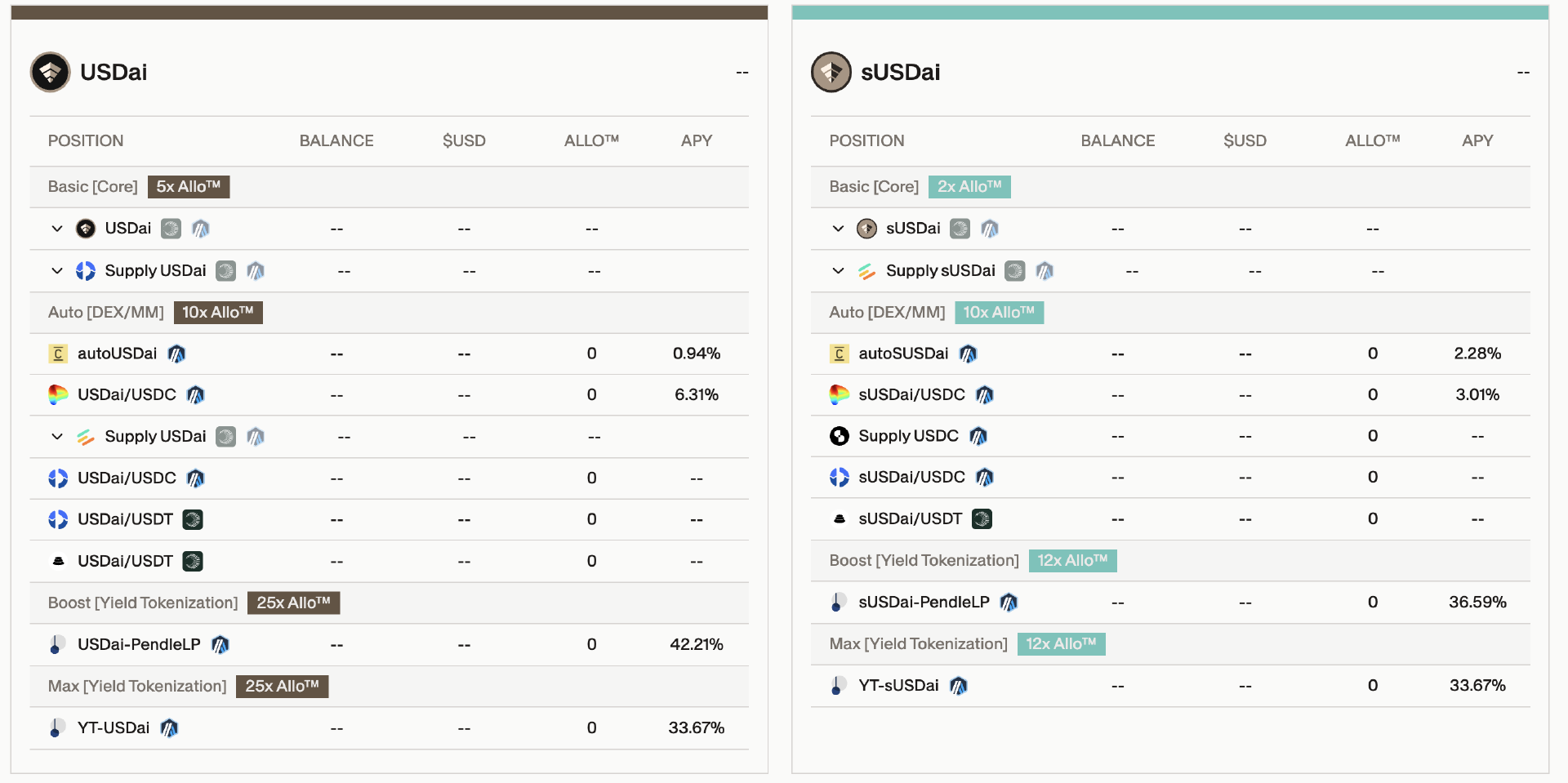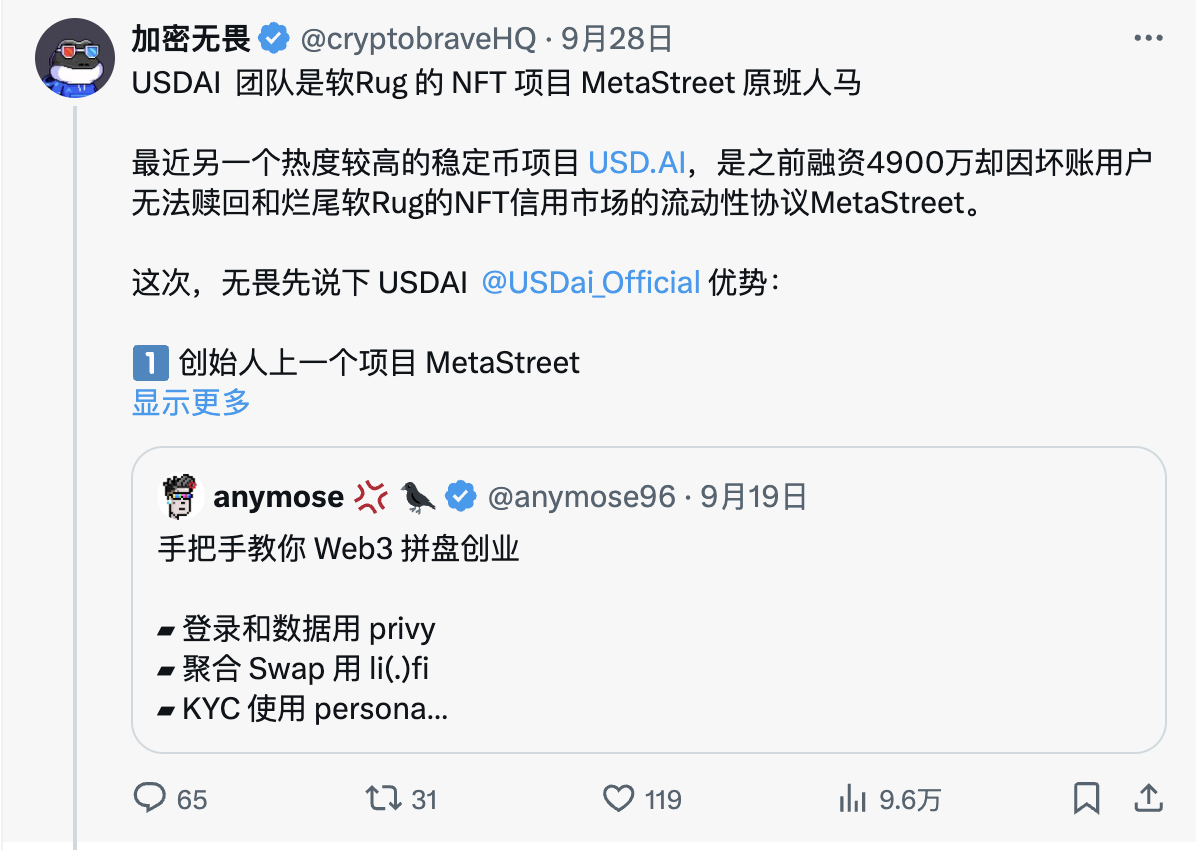Author: Azuma, Odaily Planet Daily

Following the rapid succession of Plasma and Falcon’s TGEs, which opened with FDVs exceeding tens of billions and hundreds of billions of dollars respectively, investors have begun searching for the next potential high-yield “magic mine.” With eye-catching labels such as “AI + stablecoin,” “YZi Labs investment,” “Plasma partner,” and “hard-to-get 500 million USD quota,” USD.AI has become the top choice for many users.
Combining AI and Stablecoins
USD.AI is positioned as a synthetic dollar stablecoin protocol designed to fund the physical infrastructure of artificial intelligence and other emerging fields.
On August 14, USD.AI announced the completion of a $13 million Series A funding round, led by Framework Ventures, with participation from Bullish, Dragonfly, Arbitrum, and others. Then, on August 26, YZi Labs announced an investment in USD.AI, with the specific amount not yet disclosed. Then, on August 28, USD.AI announced a partnership with Plasma, and would become one of the initial deployments on the first day of the Plasma mainnet launch.
In USD.AI's view, the main channels for the emerging artificial intelligence industry are still traditional financial income products, such as loans, bonds, and convertible preferred stocks. However, there is a clear gap between this form of financing and market demand. Therefore, the protocol hopes to build a financial layer tailored to the AI cycle to bridge this demand gap.
Specifically, USD.AI allows those with financing needs to use the hardware itself as loan collateral, restructure the related risks into standardized investable targets, and earn returns from them. In simple terms, it will accept AI companies using graphics processing unit (GPU) hardware as collateral and issue loans to them, and then send the loan income to deposit pledge users.
The operation of the USD.AI protocol relies on three roles: one is depositors, who can obtain the stablecoin USDai through deposits and then pledge it into sUSDai to earn protocol income; the second is borrowers, who are usually small and medium-sized AI companies that cannot meet their loan needs through traditional financing channels; the third is curators, who are a relatively special role. They are mainly responsible for providing first-loss capital, earning corresponding premiums, and achieving risk isolation between capital and operating entities through tokenization.
As mentioned above, USD.AI currently offers two types of stablecoin products. One is USDai, a fully collateralized stablecoin pegged to the US dollar (actually currently trading at a premium), which can be redeemed at any time. The other is sUSDai, a staking version of the stablecoin that can share in protocol profits (current staking yield is 13.22%). The price of sUSDai will gradually increase as profits accumulate, and there is a 30-day time limit for unstaking.
Points Program - Choose between IC0 and Airdrop
USD.AI launched the Allo™ program at the beginning of its launch, and made it clear that the points will correspond to future IC0 (FDV valuation of US$300 million) or airdrop rights. Its potential value expectation is also the main reason why the protocol currently attracts users.
However, it should be made clear that the rights and interests corresponding to USD.AI points can only be selected between IC0 or airdrops - if you choose to use USDai to obtain points, the corresponding rights and interests are IC0 rights (a total of 70% tokens are allocated), which requires KYC and capital subscription; if you choose to use sUSDai to obtain points, the corresponding rights and interests are airdrops (a total of 30% tokens are allocated), which does not require KYC or quota investment.

USD.AI has clarified that a single address cannot receive both IC0 and airdrop shares simultaneously. A user's total allocation will be allocated to either IC0 or airdrop based on their final points contribution. To receive both, users must use two separate wallets to participate in the points campaign.

As shown in the figure below, the channels through which users can obtain points through USDai and sUSDai (including corresponding yields and point multipliers) are shown below. The USDai on the left corresponds to IC0 rights, and the sUSDai on the right corresponds to airdrop rights.

It's not hard to find that, whether it's USDai or sUSDai, currently being an LP or buying YT on Pendle is the way to get the highest points multiplier (note that only the SY portion of LP counts), and being an LP also has a considerable annualized return (42.21%, 36.59%) - but don't rush in now. Since the minting limit of USD.AI has been reached, you can only obtain USDai from the secondary market at a premium (about $1.03). The entry wear and tear is too great for now, so you might as well wait for the next minting limit increase.
Is it worth digging?
As USD.AI's popularity continues to rise, some FUD voices have also emerged around the protocol, and the market's views on the protocol seem to be clearly divided.
Optimists believe that USD.AI combines the two hot narratives of "stablecoin" and "AI", making it an excellent hype target regardless of fundamentals. In addition, USD.AI's lead investor Framework has recently performed very well (it is also the lead investor in Plasma), and the expectation of listing on Binance brought by YZi Labs has further raised the imagination ceiling of USD.AI. In addition, the fact that USD.AI's deposits were quickly sold out after several increases in the past makes it difficult not to think of Plasma.
However, those who are pessimistic about the USD.AI lending model believe it's not fully validated by the market. Using AI companies, which can't secure sufficient financing through traditional channels, as primary borrowers creates a disadvantage, and the long-term sustainability of this mechanism remains uncertain. Furthermore, the influencer "Crypto Brave (@cryptobraveHQ)" has revealed that the USD.AI team is suspected to be the original team behind Rug's former NFT project, MetaStreet, suggesting a shady history.

As for my personal operations, I deposited some funds in Pendle USDai LP after USD.AI went online in late August, but my position was limited to a small proportion. Later, I will consider changing my account and buying some sUSDai YT when the price drops further.
For those still interested in participating in USD.AI, I personally recommend focusing on Pendle within a tolerable risk range (even if you're just going for the base LP yield, the APY is quite attractive). However, I strongly advise against entering the market at this premium—unless you believe the returns before the next quota opening will cover the nearly 3% loss. As for whether to choose USDai to participate in the ICO or sUSDai to receive the airdrop, that's a matter of personal preference.







